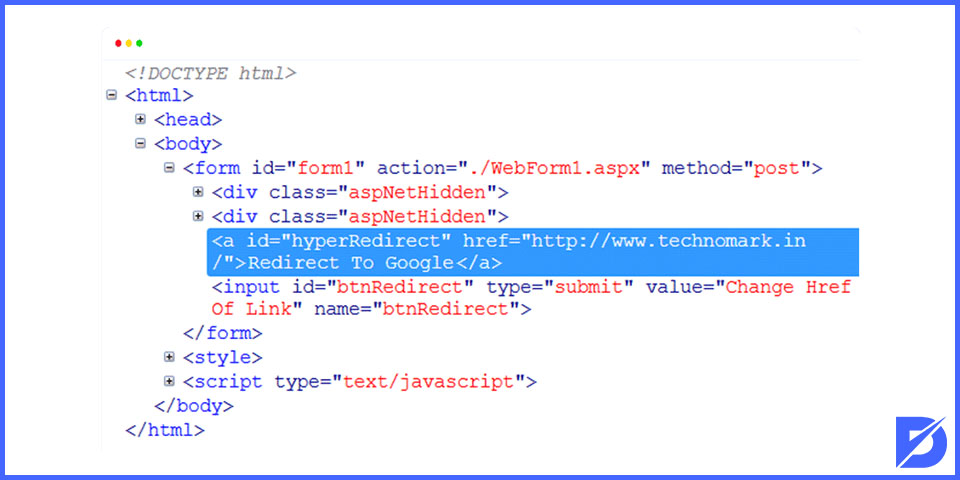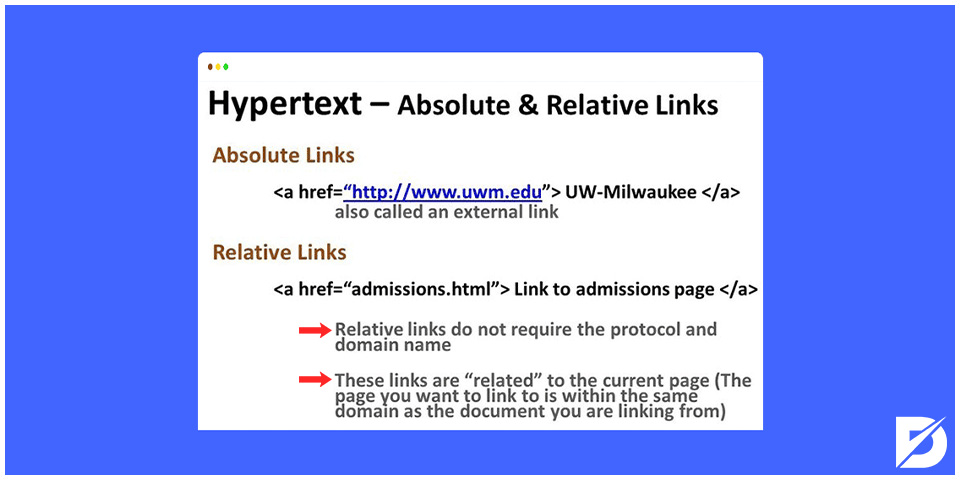Hyperlinks are essential because of provide a way to navigate between web pages. Hyperlinks are built using the HTML anchor tag, which includes the “href” attribute and specifies the URL of the target resource. The href attribute is significant because it allows linking web pages, files, images, and other resources. In this article, that’s why we will explain what is “href” in detail.
What Is HTML?
During the development of a website, some software systems are required. One of these software systems is HTML, which is a markup language. In order to better understand what a href HTML is, it is necessary to know a little more about HTML. Also, check how to edit HTML in WordPress. Let’s now explain what is HTML, in short.
As you know, websites work through web browsers. Some important web browsers are Google Chrome, Mozilla, Internet Explorer, and Bing. These web browsers need HTML codes to reflect web pages as they are. That is, they convert the HTML codes and thus create the web pages. HTML helps web browsers in three ways in particular. These are as follows:
- Web pages have many visual and textual elements. HTML codes serve to position all of this content on web pages.
- Web browsers need HTML codes to accurately reflect the content on web pages.
- Another task of HTML codes is to provide search engines with information about web pages.
You have basic knowledge of HTML, so you can understand a href now. So let’s answer the question of what is HTML a href. Learn more about hreflang and HTML lang errors.
href Explained
What is known as href is an HTML tag feature. The HTML tag stands for the HTML anchor tag. So, to put it more succinctly, it is an anchor tag in HTML. This feature performs some functions on web pages. We may list these functions as follows:
- The HTML href attribute allows redirecting to other web pages within the website. You should use the HTML link attribute for this.
- The href HTML attribute also allows going to the top directory.
- Thanks to this feature, you can also redirect between objects.
- This feature serves to run the href JavaScript code.
- The href tag also allows you to add the feature of sending e-mail through Mailto to the pages on your website.
- You may add an auto-dial feature by Tel to your web pages.

The HTML <a href attribute, which is an HTML <a> tag, performs these main functions on web pages. If you don’t have any questions about this, let’s also take a look at the definition of the href attribute. It indicates the URL of a web page where a link goes, in fact. Let’s assume that web pages do not have the href feature. In this case, the <a> tag, just as we had mentioned, would not be a hyperlink. That is, this feature allows <a> tags to act as hyperlinks in web pages. Do you want to link to the top of your current web page? Then you should use the href=”#top” code. Or, you can also use the href=”#” attribute to do this as well.
Now you know what this attribute is and what it does. So, have you wondered which browsers support the href attribute? Because you will definitely want to use this feature on your web pages. Let’s talk about these things now.
Which Browsers Support the Href Attribute?
The first thing you should know about this topic is that the href attribute is not valid in all browsers. However, there is no need to worry. Because this feature is enabled in almost all major browsers. We may list these major browsers where the href feature is enabled as follows:
- Google Chrome
- Mozilla Firefox
- Microsoft Edge
- Opera
- Safari Browser
The syntax in these browsers is also as follows:
<a href=”URL”>
Where Does The Name Href Come From?
Let’s clarify where the href name comes from while we have given such detailed information on the subject. The href word is an acronym for hypertext reference. The letter H comes from hypertext, and the syllable ref comes from the word reference. These two combine to form the href term. Hrefs have some basic components. In fact, these basic components are just two. The first of these is the URL component. It is the main link. The second of these essential components is the anchor text. These are clickable texts. Also, they appear on the web page.
Absolute and Relative Links
The most common link types in the href attribute are absolute and relative links. There is a pretty obvious reason for this. Let’s assume you want to move your web pages to a different folder. Relative links ensure that you do not need to make any changes in such cases. The same applies if you change the name of the folder where your web pages are located. However, let’s say the web page to which you will apply the href attribute is located on a different website. In this case, this process works a little differently. In this case, you must use the full URL when adding the href code. That is, the URL you will add must contain HTTP:// part. Otherwise, this feature will not be active or will cause different disorders.

To target resources, Absolute links include a complete path from the root domain. Absolute links use the full site link with protocols and domain names. They provide that search engine bots can know the correct URL and where to go. In this way, site crawlers can scan these URLs easier which is important for indexing.
What Is href, In Short
Web pages consist of codes. Browsers need to use some systems to read these codes. These systems are called HTML. There are different features that read each element of a web page within HTML systems. The href feature is one of them. We have tried to explain what this feature does in this article. In this article, you will find all kinds of information about this feature. We hope you enjoyed our article.
Frequently Asked Questions About
This term is an abbreviation. It stands for the “Hypertext reference” term.
It indicates the connection between web pages to search engines.
You may use <a> and </a> tags to do this.
You must use JavaScript to do this. Thus, it redirects to that link value when someone clicks on anywhere in the div.
They are smart URLs. They allow you to redirect users to any location within your app.





No comments to show.